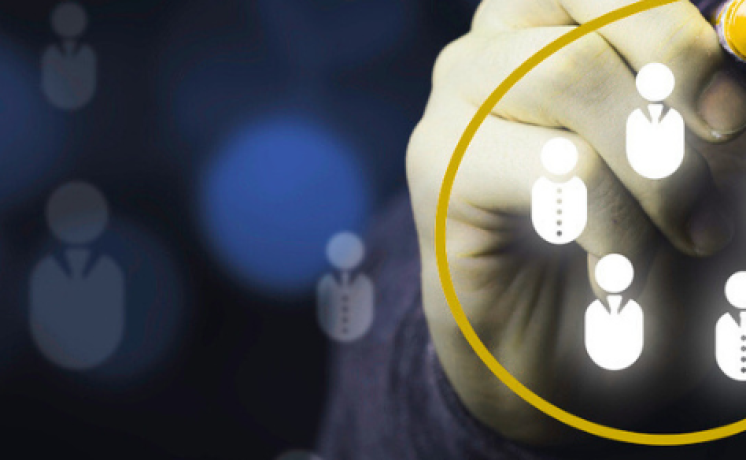Even with the latest advances in artificial intelligence and data science, until recently there hasn’t been much talk about the use of data analytics in the life sciences industry; however, things are changing fast.
Some of this change is due to the latest trends, and at least a small part of this change can be attributed to the pandemic. The life sciences industry needed new ways to conduct business, and companies are harnessing the power of data science.
Life sciences and healthcare depend on vast amounts of data—the more data the better. But collecting it is only part of the process; fast and accurate analysis of the data is key. Data science most certainly fills that need. “More is better when it comes to Big Data and machine learning. This is particularly true in the fields of medicine and pharma. A report by Accenture estimates that by the year 2026, Big Data in conjunction with machine learning in medicine and pharma will be generating value at a prodigious rate: $150 billion/year” (Faggella, 2018).
Data Science
Data science is a huge umbrella under which falls data mining, data engineering, data visualization, and database management. Life sciences companies have advanced databases and technologies to manage and mine data and even do analysis; however, modern-day data science brings in more advanced analytic tools such as machine learning, which could truly be a game changer.
Simple Regression Model versus Machine Learning
A simple regression model can be described as a model that is fed a few select features; for example, the square footage, number of bedrooms, and location of houses for sale in a particular area. Humans decide the optimum number of features, and which features to be used. The model returns the price of houses with these features and plots them on a graph. The function against which these data points are fitted is also selected by humans and is a trial-and-error process. Moreover, there are limited functions to select from. A disadvantage of the simple regression model is that it cannot be used for image analysis (S. Samuel, personal communication, November 2021).
The machine learning model operates in a different way. It can take into consideration more than just three features as in the three axes of a graph and it can repeat the exact process for millions of images or rows of data. This new model selects the features, decides the optimal features to be selected, and picks a function to fit the data against. It can even alter the function to better fit the data for a more precise analysis. Most importantly, one of the greatest advantages of machine learning models is that it can do image analysis or computer vision (S. Samuel, 2021).
Examples of Data Science in Pharma
Image Analysis in Diagnosis
Image analysis is often used for medical diagnosis in clinical trials. For instance, you can train a model to pick out optimal features in cancer tumor images and review millions of images to classify tumors and help physicians in their diagnostic process (S. Samuel, 2021).
Machine learning is used in diagnosis and disease identification. It was reported by Accenture in 2015 that more than 800 cancer treatments are in clinical trials and the accurate analysis of this vast amount of data can be accelerated by machine learning. Companies like IBM Watson Health are pioneering this kind of machine learning technology (Faggella, 2018).
Personalized Medicine
Another important application for machine learning in pharma and health is personalized medicine. Personalized or precision medicine focuses on the genetics of an individual patient. This process is extremely expensive as it involves companion diagnostics and genetic testing. Companion diagnostics on biomarkers and marker-negative patients means larger patient pools, more data, and the need for sufficient time to analyze the resulting data.
There is much research going on regarding the use of machine learning and predictive analytics in customizing treatment to a person’s unique health history. If successful, this can result in optimized diagnoses and treatment protocols. Using data science models can speed up the process and reduce the cost of treatment. Currently IBM Watson Oncology is helping pioneer this (Faggella, 2018). The fast analysis of data from specific cancers and specific patient pools can hasten therapies for cancer.
Clinical Trials and Drug Discovery
Taking the above results and reversing the process can help in clinical trials. Based on precision medicine studies, these predictive algorithms can pick out sites and patient population, calculate ideal sample sizes, and even facilitate patient recruitment for future studies (Faggella, 2018). This means that the trials can be geared more toward individual patient sets and greater efficacy of specific drugs and dosages.
Data analysis in precision medicine can also lead back to basic research and drug discovery pipelines. Industries can create automated targeted pipelines based on very fast data analysis with the large amount of data being generated. Cognizant maintains that their data science solution can help cross reference research from clinical trials on cancer drugs thus laying the groundwork for development of other drugs (Cognizant, n.d.).
One of the big players in precision medicine using machine learning for drug discovery is the MIT Clinical Machine Learning Group, which focuses on algorithm development (Faggella, 2018).
Takeaways
The Cognizant case study describes the use of data science models to comb through millions of data points in patient profiles for a more accurate review of patient outcomes. The review process went from 20 months to 20 days and trimmed time to full drug development by up to four years. Better still, there was up to 10% cost savings (Cognizant, n.d.).
Like IBM and Cognizant, there are other companies who are using data science models in their products for life sciences companies. ThoughtSpot (www.thoughtspot.com) has similar AI platforms. Coforge (www.coforge.com) is also seeing the importance of data science from drug discovery all the way to commercialization and beyond.
Conclusion
The life sciences industry depends on big data collection and analysis. The faster and greater accuracy with which these very large amounts of data can be processed is the difference between being on the cutting edge or not. It also delivers superior drugs to the market at a faster rate and lower cost. All signs point to data science being an integral part of the life sciences industry.
References
Cognizant. (2021). Data science fast-tracks cancer drug development PDF.
Faggella, Daniel. (2018). AI in the life sciences: Six applications. Genetic Engineering & Biotechnology News.




